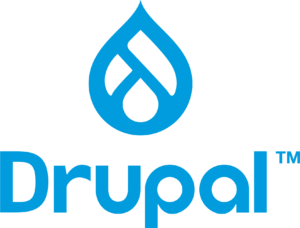In the ever-evolving digital landscape, securing your Drupal website against malicious attacks has never been more crucial. Despite the robustness of the Drupal platform, even the best security measures can be rendered ineffective by a skilled hacker. In this blog post, we will explore the seven most significant Drupal security breaches, identify the attack vectors used, and learn how to defend against them. Keep reading to learn from these notorious incidents and ensure your website remains secure.
Drupalgeddon (2014)
Attack vector: SQL Injection
The infamous “Drupalgeddon” sent shockwaves through the Drupal community in 2014. This critical vulnerability, designated as CVE-2014-3704, enabled attackers to exploit an SQL injection flaw in the Drupal core, allowing them to execute arbitrary SQL commands. As a result, attackers gained complete control over vulnerable websites, leading to a myriad of data breaches, defacements, and more. To prevent such attacks, always apply security updates promptly and enforce strict input validation.
Drupalgeddon 2 (2018)
Attack vector: Remote Code Execution
Four years after the original Drupalgeddon, the community faced another major security breach in 2018, dubbed “Drupalgeddon 2.” This time, the vulnerability, tracked as CVE-2018-7600, allowed attackers to remotely execute arbitrary code on vulnerable Drupal sites. The flaw was present in the core of Drupal 6, 7, and 8, impacting a significant number of websites. The best defense against remote code execution vulnerabilities is to apply patches immediately, restrict permissions, and follow the principle of least privilege.
RESTful Web Services Module (2019)
Attack vector: Remote Code Execution
In 2019, a critical vulnerability was discovered in the popular Drupal module “RESTful Web Services.” This vulnerability, designated as CVE-2019-6340, allowed attackers to execute arbitrary code by exploiting a deserialization issue within the module. As a precaution, users were advised to disable the module and update to the latest version. To minimize risks associated with third-party modules, ensure they are regularly updated and maintained by trustworthy developers.
The File Upload Module (2016)
Attack vector: Arbitrary File Upload
In 2016, the Drupal File Upload module faced a significant security breach that allowed attackers to upload arbitrary files. The vulnerability, tracked as CVE-2016-4304, enabled hackers to bypass file validation checks and upload malicious files, leading to remote code execution and potentially compromising the entire website. To counter such attacks, limit file types, sizes, and permissions, and implement server-side validation checks.
Coder Module (2016)
Attack vector: Remote Code Execution
Another critical security breach in 2016 targeted the Coder module, a popular tool for reviewing Drupal code. The vulnerability, identified as CVE-2016-6234, was a remote code execution flaw that allowed attackers to execute arbitrary PHP code on the server. To prevent such attacks, update modules frequently and ensure that only trusted users have access to sensitive components of your site.
Mailchimp Module (2017)
Attack vector: Cross-Site Scripting (XSS)
In 2017, the Drupal Mailchimp module, used for email marketing campaigns, fell victim to a cross-site scripting (XSS) attack. The vulnerability, listed as CVE-2017-6378, allowed attackers to inject malicious scripts into the module, which were then executed in the context of the victim’s browser. These scripts could steal sensitive information or perform unauthorized actions on behalf of the user. Defend against XSS attacks by sanitizing user input, implementing Content Security Policy (CSP), and employing output encoding techniques.
CKEditor Module (2018)
Attack vector: Cross-Site Scripting (XSS)
Another notable XSS attack in 2018 targeted the CKEditor module, a widely-used WYSIWYG text editor for Drupal. The vulnerability, known as CVE-2018-1000171, enabled attackers to inject malicious JavaScript code into the editor, which could then be executed by site administrators or other privileged users. To mitigate the risk of XSS attacks in third-party modules, ensure they are up-to-date and follow best practices for securing user inputs and outputs.
Conclusion
The seven security breaches we’ve examined in this blog post offer valuable insights into the potential attack vectors that hackers might exploit to compromise Drupal websites. By learning from these incidents, you can adopt proactive measures to safeguard your website against similar threats. Remember to keep your Drupal core and modules up-to-date, follow security best practices, and perform regular security audits to identify potential vulnerabilities. With these steps in place, you can significantly reduce the risk of falling victim to security breaches and protect your website’s integrity.


